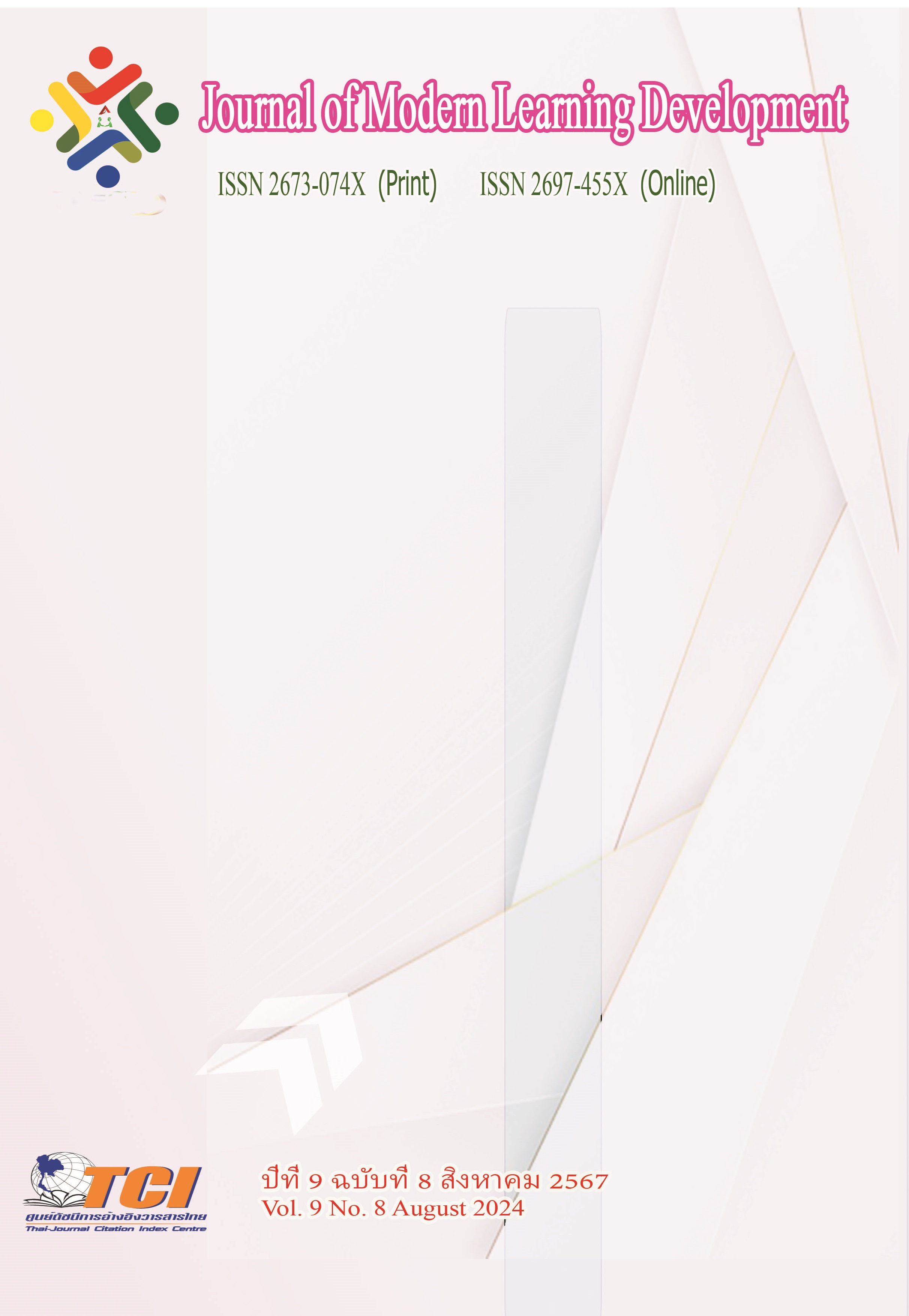Application of Aparihaniyadhamma principles to promote public participation in community development in the area of Rueang Subdistrict Administrative Organization, Mueang District, Nan Province
Main Article Content
Abstract
The application of the principle of (Aparihaniyatham) to promote public participation in community development in the area of Rueang Subdistrict Administrative Organization, Mueang District, Nan Province has the following objectives. 1. To study the participation of people in community development in the area of Rueang Subdistrict Administrative Organization. 2. To compare public opinions on public participation in community development in the Rueang Subdistrict Administrative Organization area. Classified according to personal factors 3. To present guidelines for applying the principles of Aparihaniyadhamma to promote public participation in community development in the area of Rueang Subdistrict Administrative Organization, Mueang District, Nan Province. The research is a combined method consisting of quantitative research. By using a questionnaire Statistics used are frequency, percentage, mean, standard deviation, and test of value (t-test) and test of value (F-test) using one-way analysis of variance method. and qualitative research with in-depth interviews with key informants. Using an interview form and descriptive content analysis.
The results of the research found that: 1. The level of participation of people in community development in the area of Rueang Subdistrict Administrative Organization, Mueang District, Nan Province, overall is at a high level (X ̅= 4.25). 2. Comparing the presence of People's participation in community development in the area of Rueang Subdistrict Administrative Organization, Mueang District, Nan Province, classified according to gender, age, educational background, occupation, and income. People's participation in community development in the area of the Subdistrict Administrative Organization. Rueang, Mueang District, Nan Province no different Therefore, the research hypothesis was rejected. 3. Guidelines for applying the principles of (Aparihaniyadhamma) to promote people's participation in community development in the area of Rueang Subdistrict Administrative Organization is to hold a meeting once a month, encouraging people to show their abilities. in carrying out activities Encourage people to know the rules and regulations of society. Encourage citizens to demonstrate respect and obedience to superiors. Encourage women to show their abilities to help within the community. Encourage people to preserve the good culture and traditions of 1 village, 1 tradition. Encourage people to help preserve Buddhism. and encourage people to study the principles to apply to community participation according to the principles of participation To lead to the development of communities to be stable, prosperous and sustainable.
Article Details
References
จาดุร อภิชาตบุตร. (2565). หลักประชาธิปไตย:การมีส่วนร่วมของประชาชน. ออนไลน์. สืบค้นเมื่อ 20 ตุลาคม 2566. แหล่งที่มา: https: //www.constitutionalcourt.or.th/10426.
ธนิศร ยืนยง. (2561). การมีส่วนร่วมของประชาชนที่ส่งผลต่อการพัฒนาท้องถิ่นในจังหวัดนครนายก. มหาจุฬานาครทรรศน์. 5 (2), 121-122.
นงเยาว์ ทองสุข. (2558). การมีส่วนร่วมของประชาชนในการพัฒนาหมู่บ้านเศรษฐกิจพอเพียง อําเภอสิเกา จังหวัดตรัง. วารสารวิจัยมหาวิทยาลัยเวสเทิร์น. มนุษยศาสตร์และ สังคมศาสตร์. 1 (3), 9-15.
พระธวัชชัย สนฺติธมฺโม (วรรณนาวิน). (2561). การมีส่วนร่วมของประชาชนในการพัฒนาชุมชนในเขตเทศบาลเมืองสระแก้ว จังหวัดสระแก้ว. สารนิพนธ์รัฐประศาสนศาสตรมหาบัณฑิต. บัณฑิตวิทยาลัย: มหาวิทยาลัยมหาจุฬาลงกรณราชวิทยาลัย.
พระนุชิต นาคเสโน (โพวิชัย). (2561). การมีส่วนร่วมของประชาชนในการบริหารจัดการมูลฝอยของเทศบาลตำบลทุ่งหลวง อำเภอสุวรรณภูมิ จังหวัดร้อยเอ็ด. สารนิพนธ์รัฐประศาสนศาสตรมหาบัณฑิต. บัณฑิตวิทยาลัย: มหาวิทยาลัยมหาจุฬาลงกรณราชวิทยาลัย.
พระบุญโชค กิตฺติสาโร (คำภีระ). (2556). ประสิทธิผลการบริหารการพัฒนาชุมชนขององค์การบริหารส่วนตำบลเขาวง อำเภอพระพุทธบาท จังหวัดสระบุรี. วิทยานิพนธ์พุทธศาสตรมหาบัณฑิต สาขาวิชารัฐประศาสนศาสตร์. บัณฑิตวิทยาลัย: มหาวิทยาลัยมหาจุฬาลงกรณราชวิทยาลัย.
พระหมี ถิรจิตฺโต (สีทน). (2561). การพัฒนาชุมชนตามแนวทางปรัชญาเศรษฐกิจพอเพียงของหมู่บ้านเศรษฐกิจพอเพียงต้นแบบบ้านหนองเอาะ อำเภอตระการพืชผล จังหวัดอุบลราชธานี. สารนิพนธ์รัฐประศาสนศาสตรมหาบัณฑิต. บัณฑิตวิทยาลัย: มหาวิทยาลัยมหาจุฬาลงกรณราชวิทยาลัย.
พระอธิการปรีชา ติกฺขญาโณ (มาทา). (2560). ประสิทธิผลการบริหารงานตามหลักอปริหานิยธรรมของเทศบาลตำบลนาแก้ว อำเภอเกาะคา จังวัดลำปาง. วิทยานิพนธ์พุทธศาสตรมหาบัณฑิต สาขาวิชารัฐประศาสนศาสตร์. บัณฑิตวิทยาลัย: มหาวิทยาลัยมหาจุฬาลงกรณราชวิทยาลัย.
มหาจุฬาลงกรณราชวิทยาลัย. (2539). พระไตรปิฎกภาษาไทย ฉบับมหาจุฬาลงกรณราชวิทยาลัย. กรุงเทพมหานคร: โรงพิมพ์มหาจุฬาลงกรณราชวิทยาลัย.
มนตรี อินน้อย. (2566). การมีส่วนร่วมของประชาชนในการแก้ไขปัญหาอุทกภัยขององค์การบริหารส่วนตำบลม่วงตึ๊ด อำเภอภูเพียง จังหวัดน่าน. สารนิพนธ์รัฐประศาสนศาสตรมหาบัณฑิต. บัณฑิตวิทยาลัย: มหาวิทยาลัยมหาจุฬาลงกรณราชวิทยาลัย.
รัฐธรรมนูญแห่งราชอาณาจักรไทย. (2560). ราชกิจจานุเบกษา 134. (เมษายน 2560): 20.
สิน พันธุ์พินิจ. (2547). เทคนิคการวิจัยทางสังคมศาสตร์. กรุงเทพมหานคร: โรงพิมพ์จูนพับลิชชิ่ง


